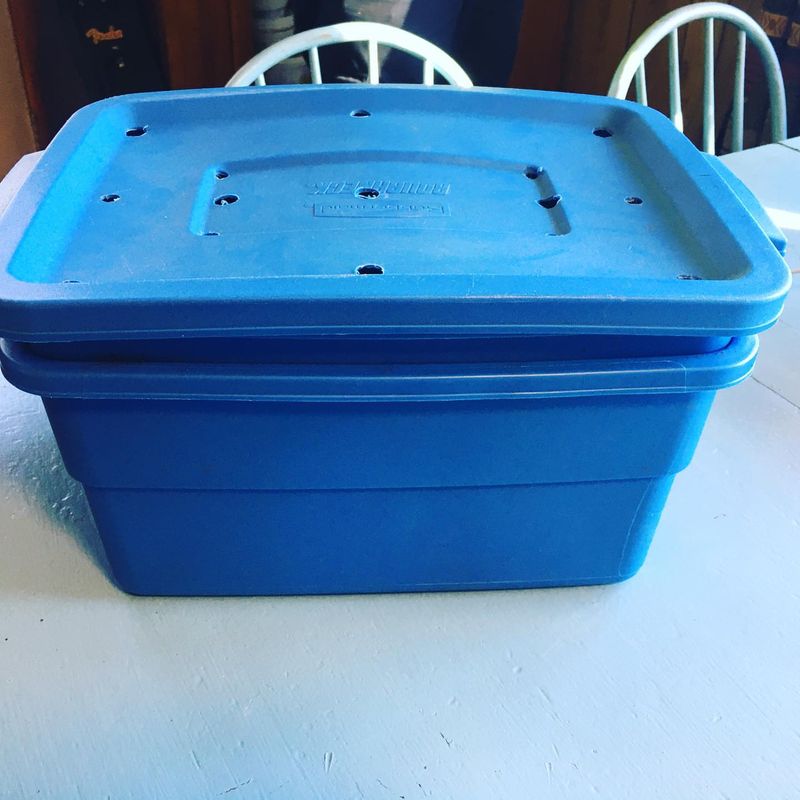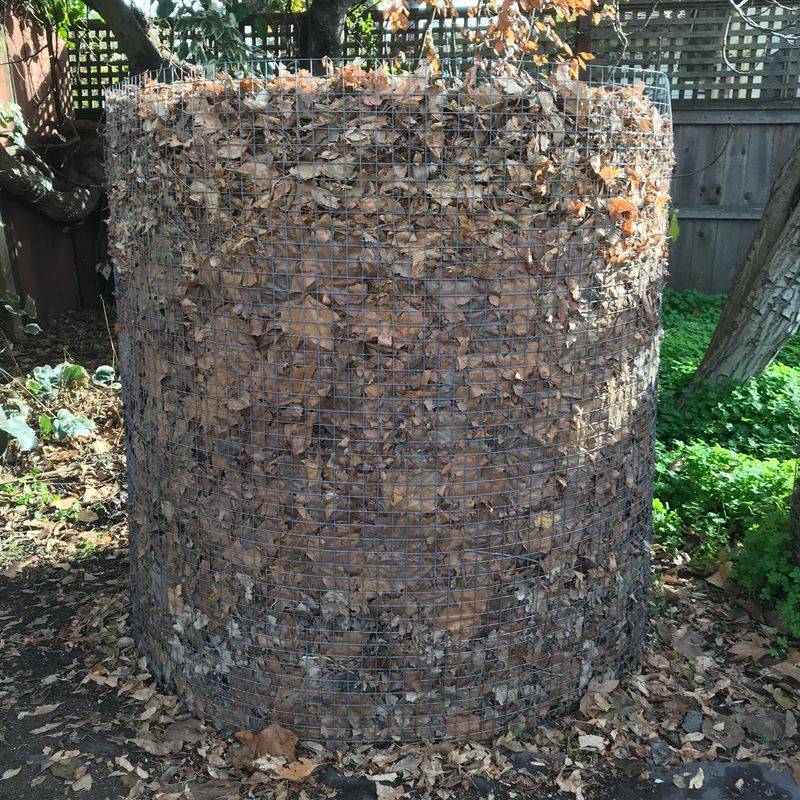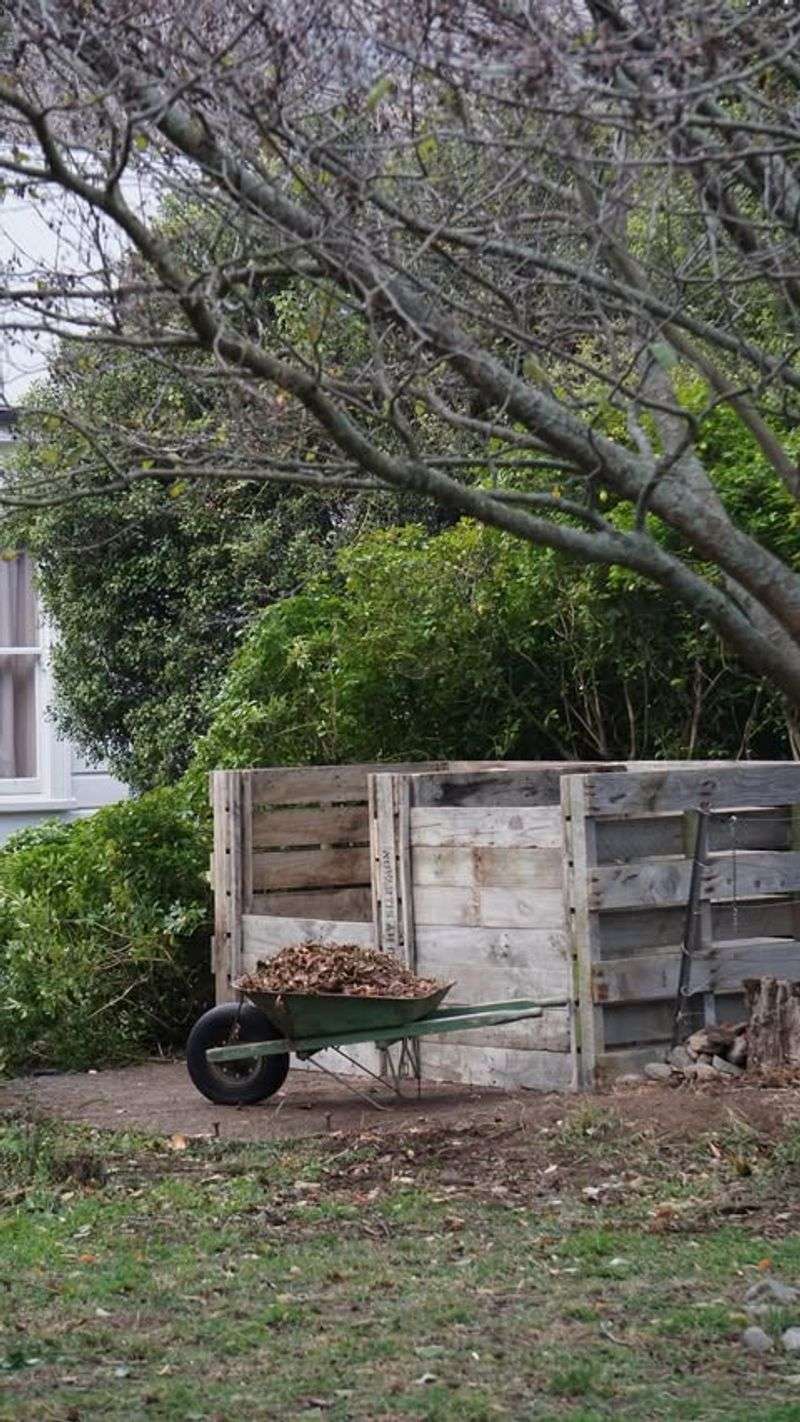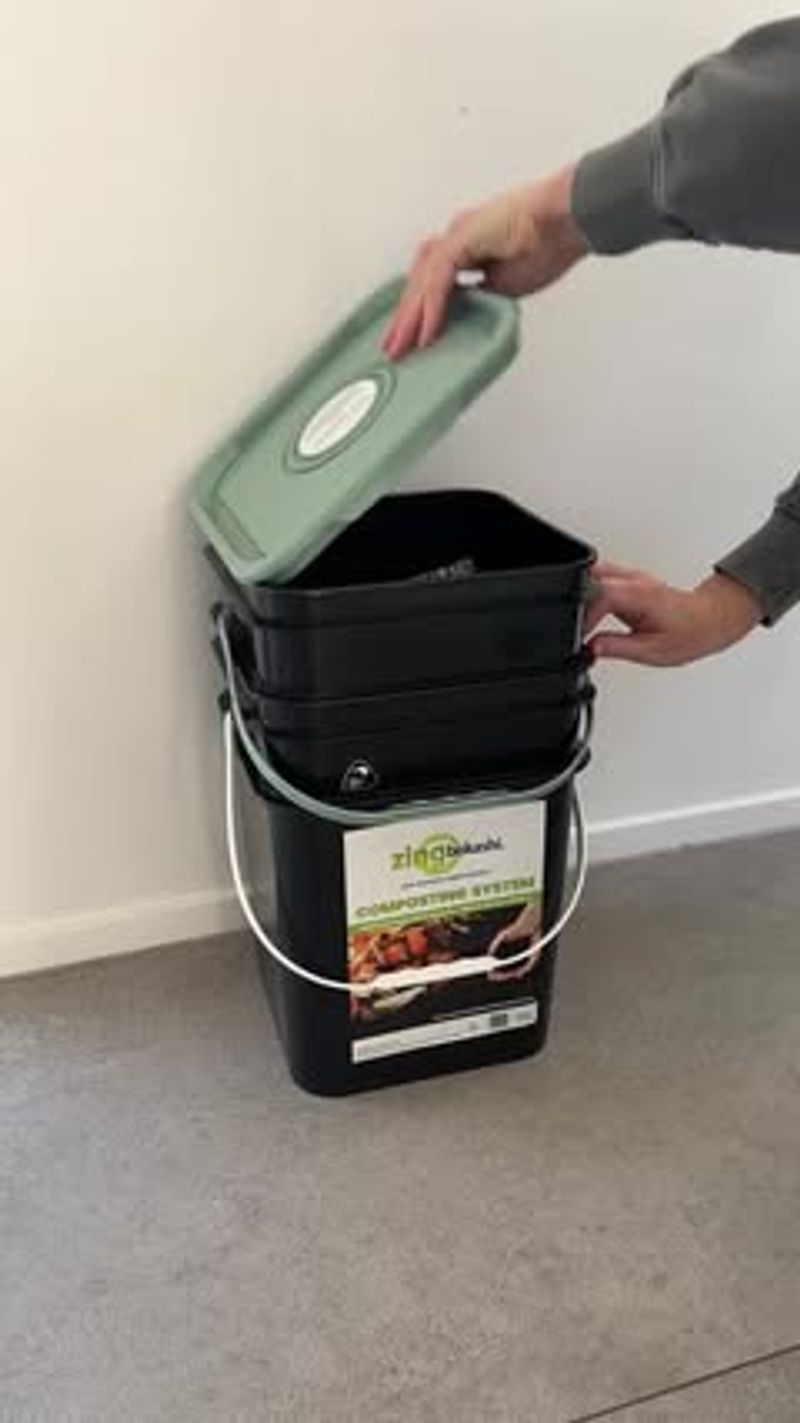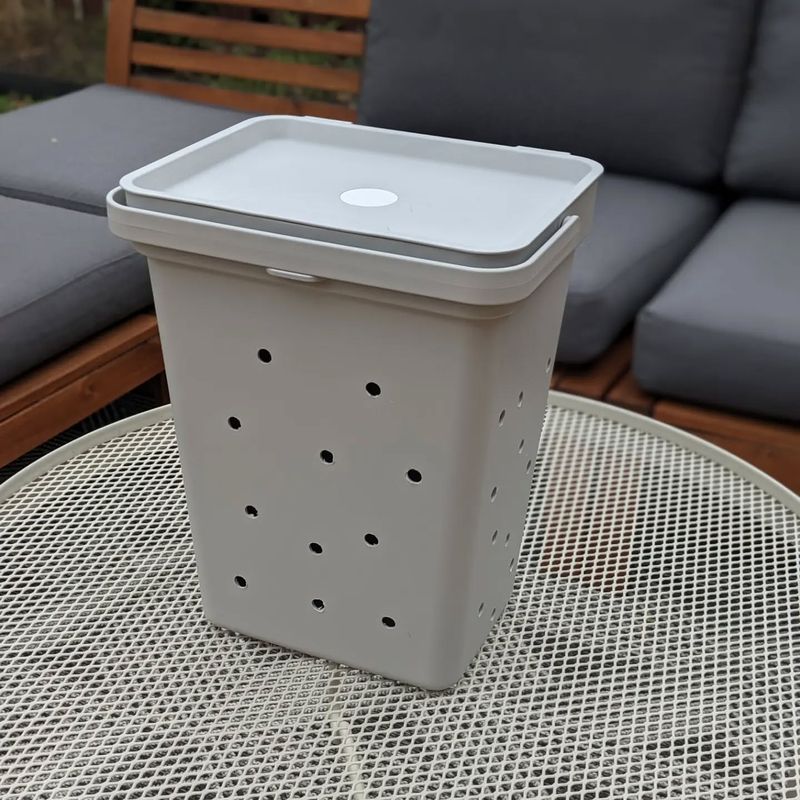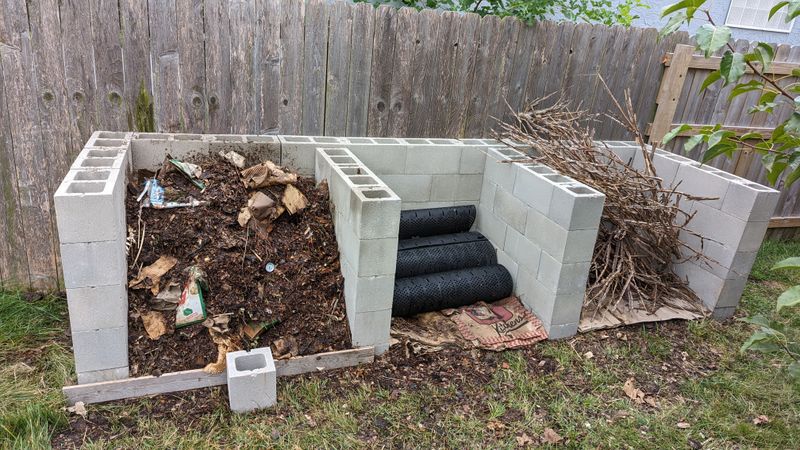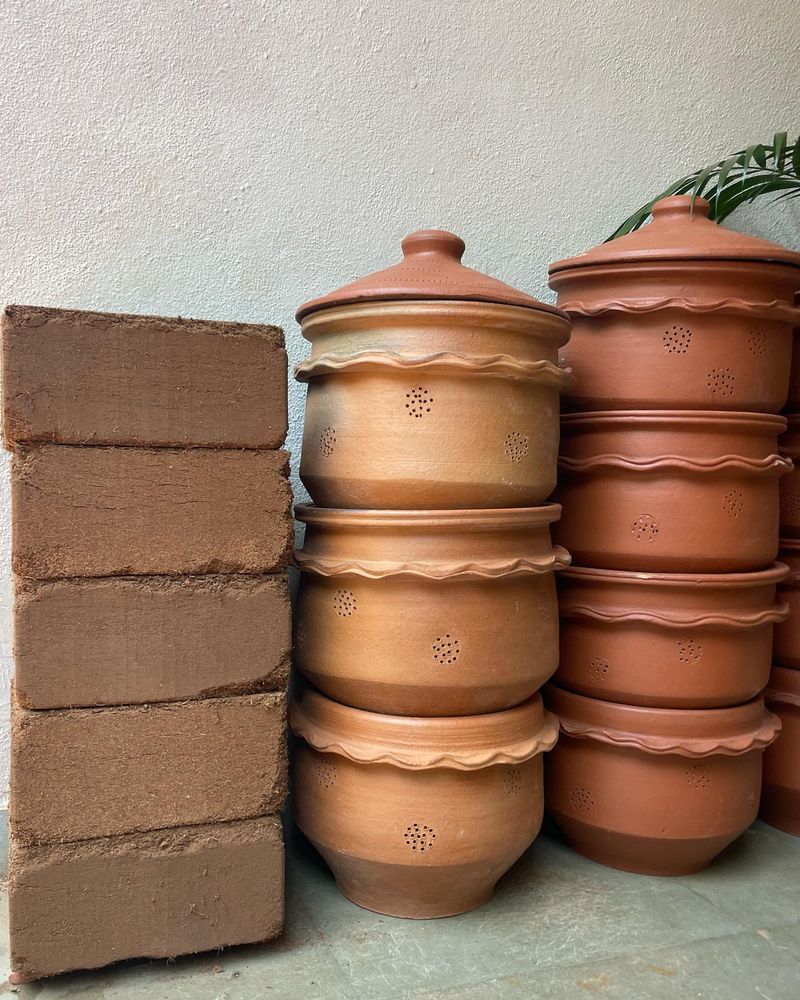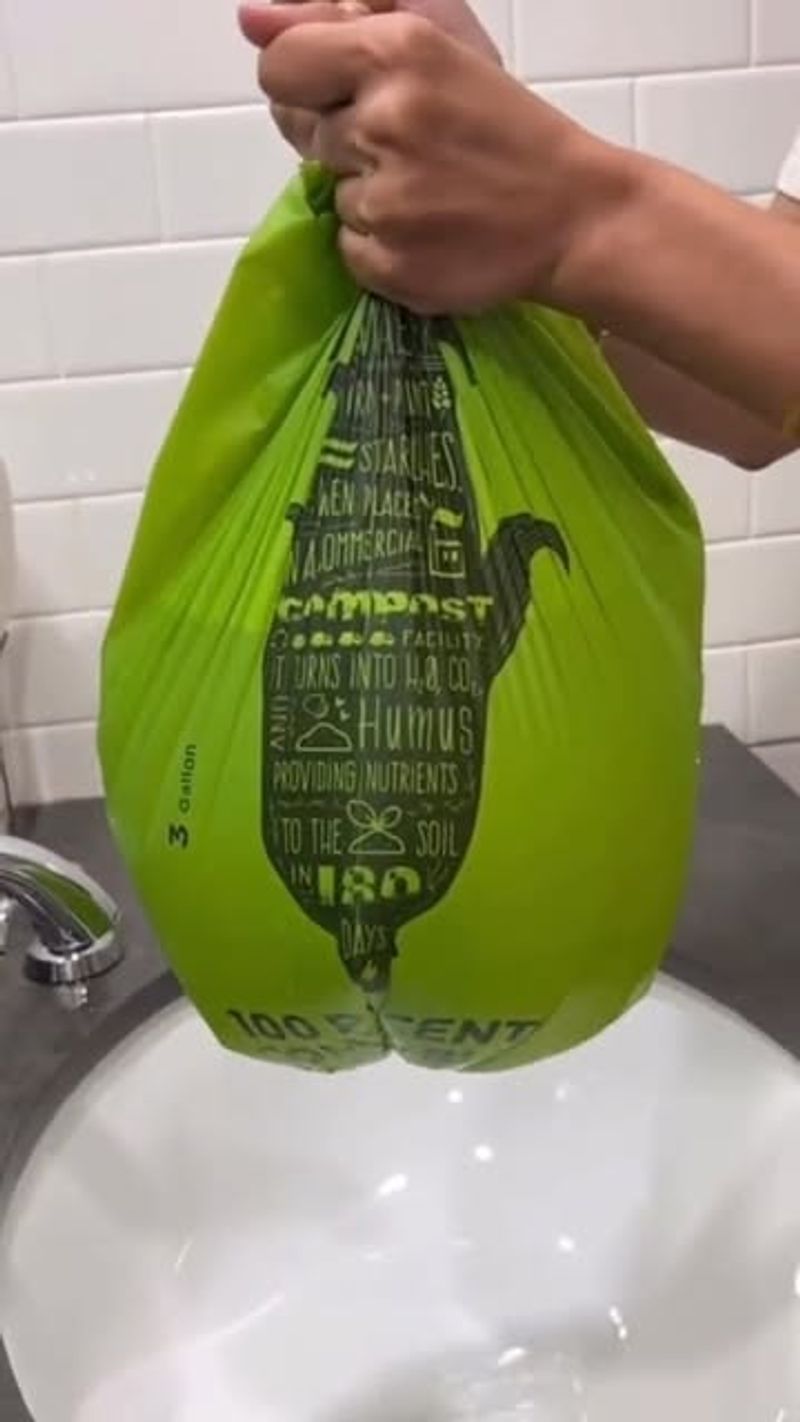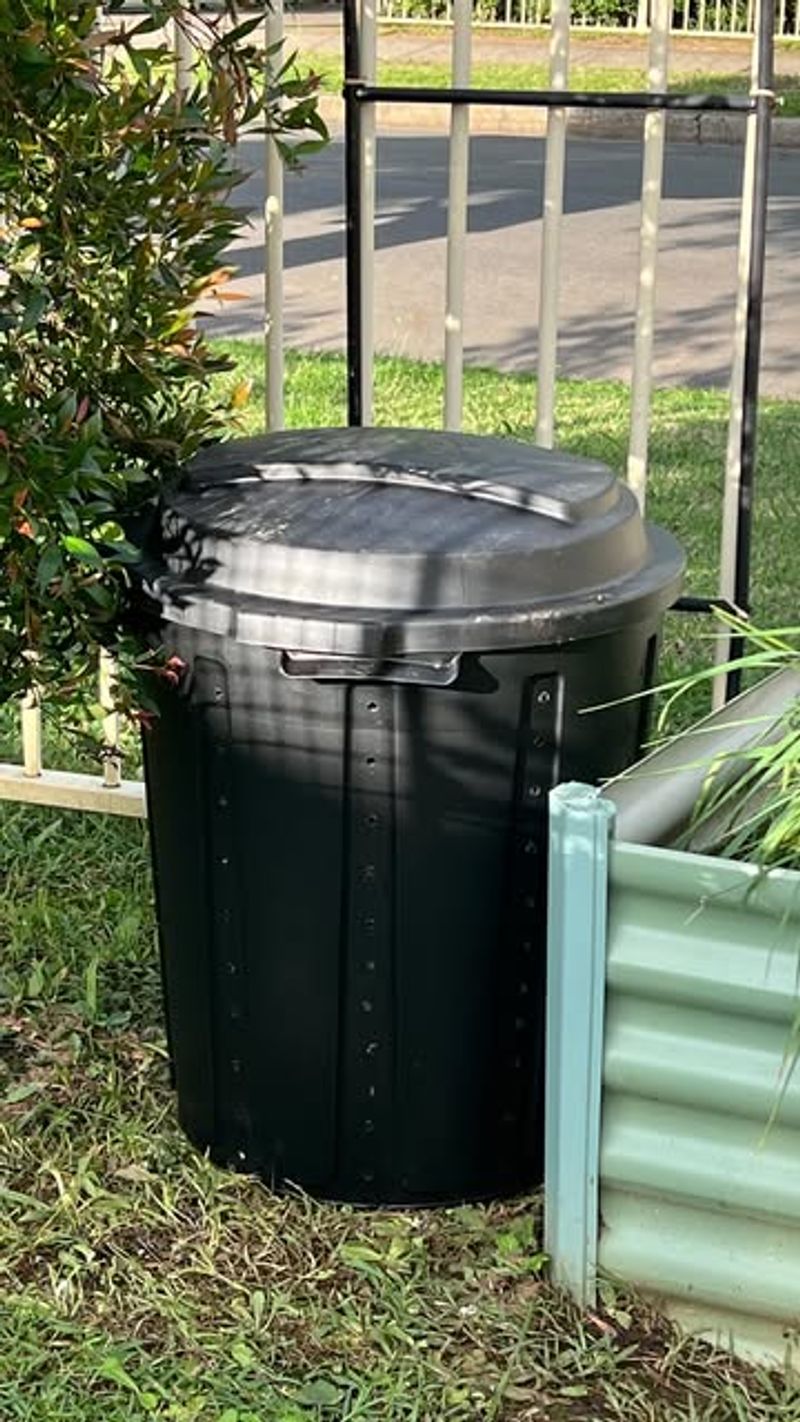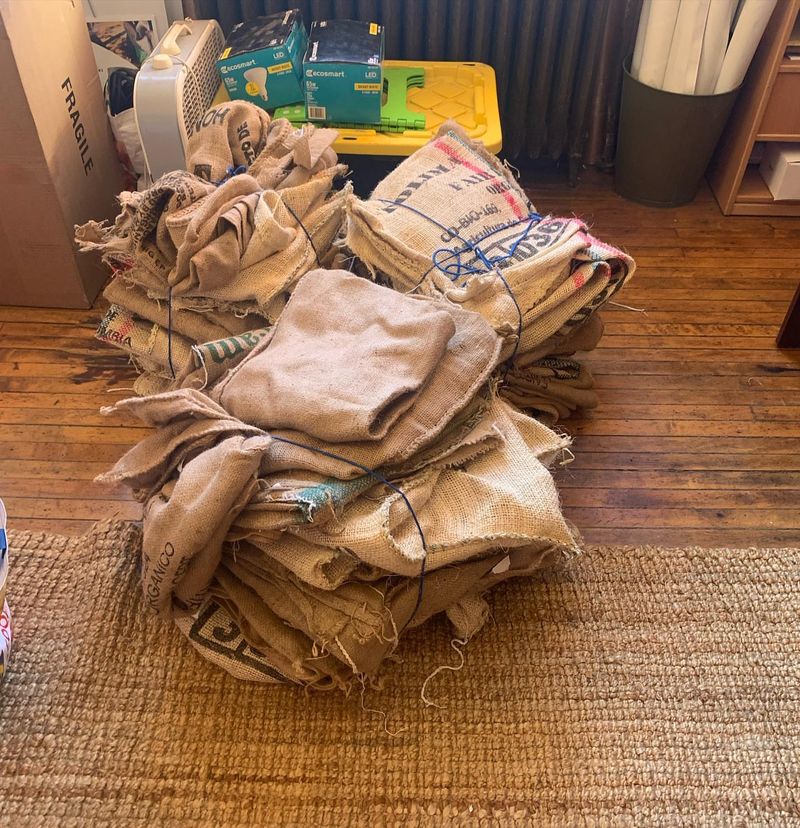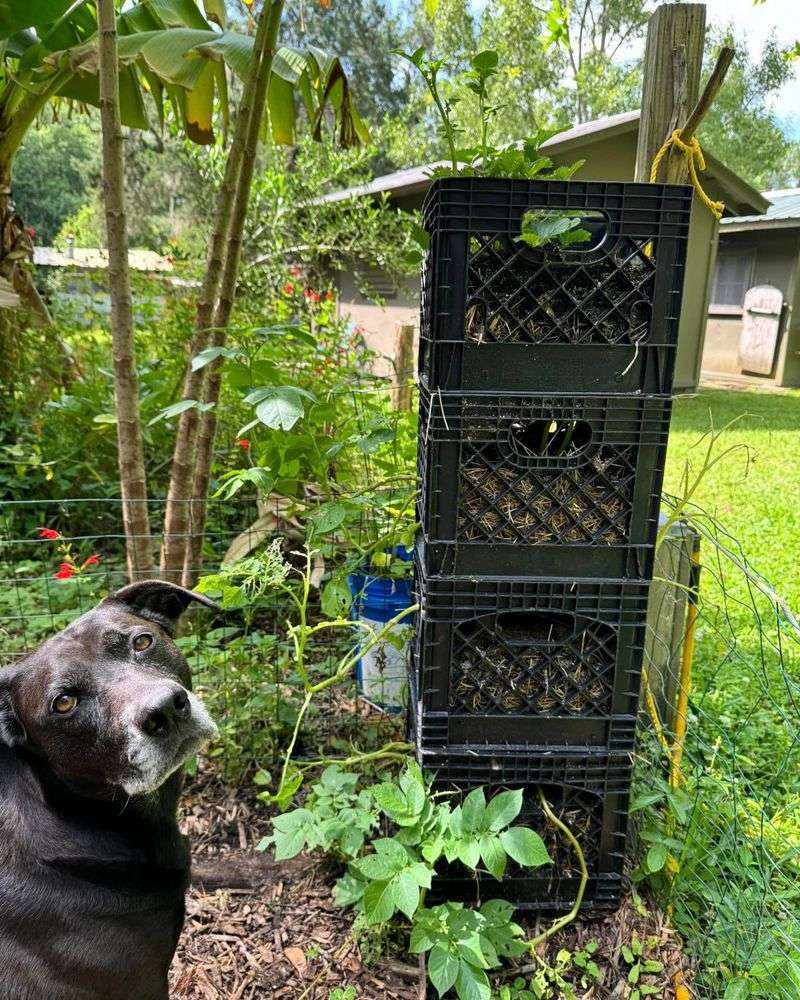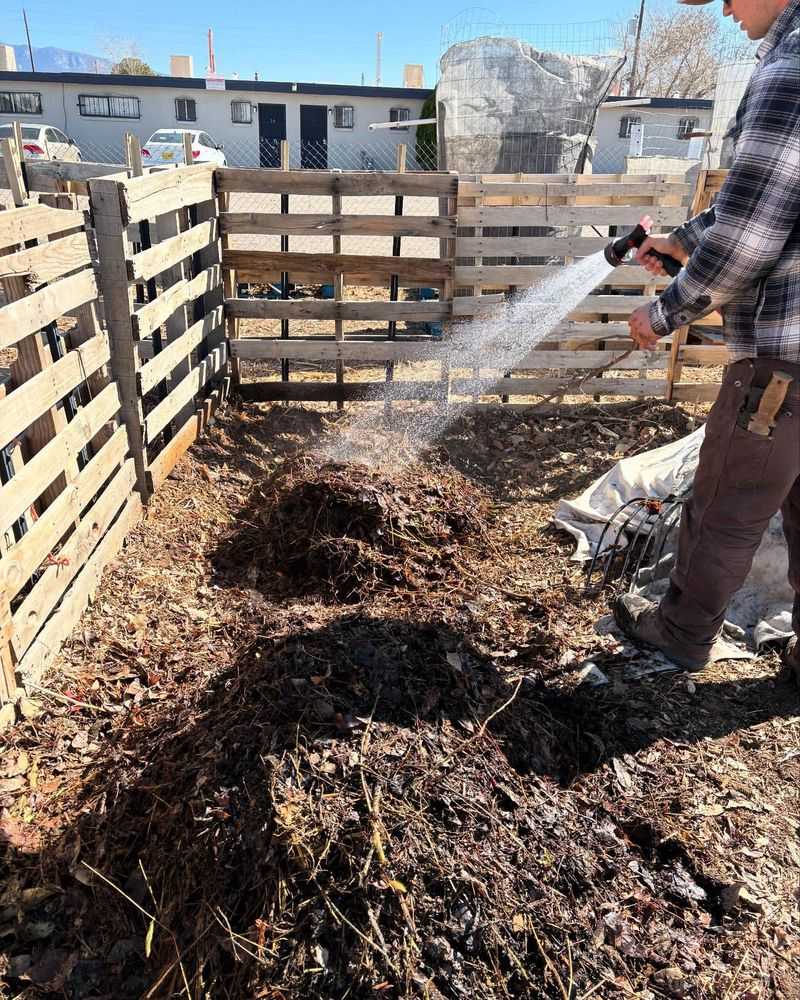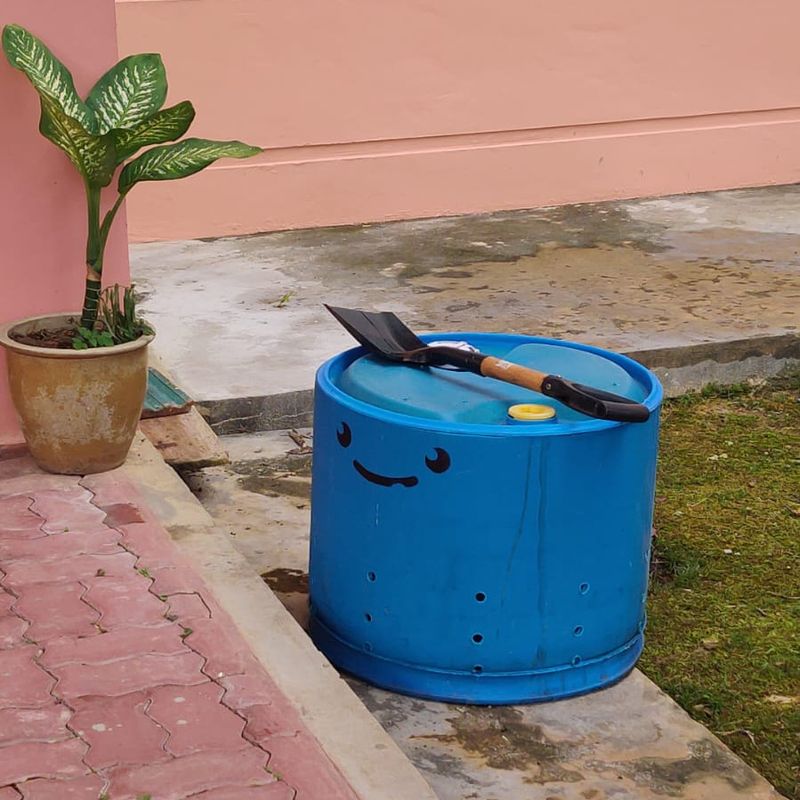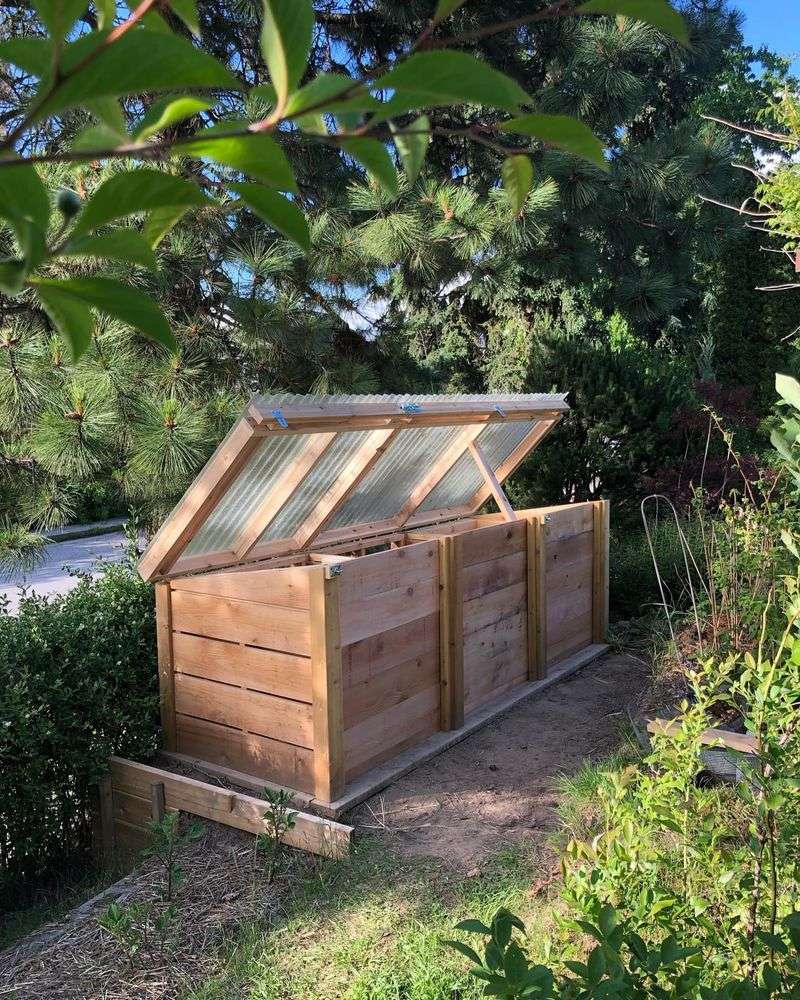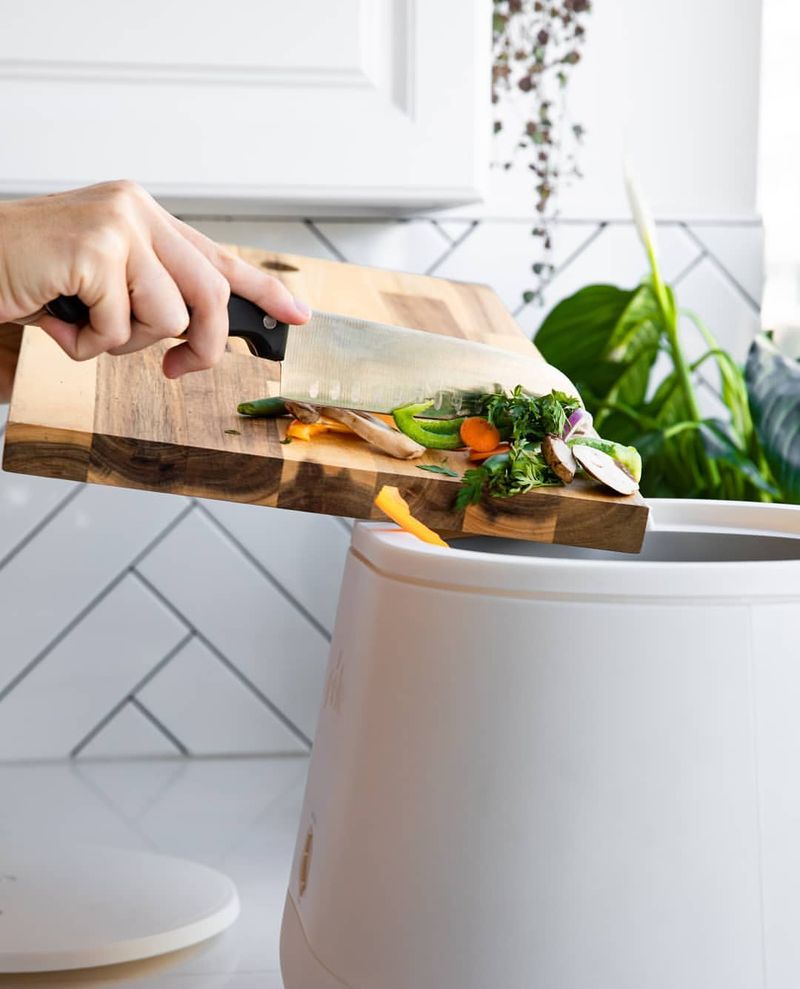I used to toss my scraps without a second thought—out of sight, out of mind. Then it hit me: I was throwing away garden gold. Composting seemed messy and complicated, but once I got the hang of it, it was easy as pie.
The trick? Finding the right bin. After testing all sorts—cheap, chic, big, small—I’ve rounded up the best compost bin ideas that actually work for real spaces and real budgets.
1. Plastic Storage Tote Bin
Got an old storage tote collecting dust? Transform it into a compost bin with just a drill and 5 minutes! Punch holes in the bottom for drainage and on the sides for airflow.
The lid keeps pests out while containing any smell. Place it in a corner of your yard or balcony, and you’re ready to start composting kitchen scraps.
Cost? Practically free if you already have the tote, or around $5-10 if you need to buy one.
2. Wire Mesh Cylinder
Chicken wire or hardware cloth makes a super simple compost bin. Just form a cylinder about 3 feet across, secure the ends with wire or zip ties, and you’ve got an instant compost area!
The open design allows for excellent airflow, which helps your compost break down faster. No bottom means worms can easily move in and out to help with decomposition.
Materials cost about $15-20 at any hardware store, making this an affordable weekend project.
3. Wooden Pallet Compost Box
Wooden pallets are often free for the taking behind stores or on marketplace sites. Grab four and stand them up in a square, securing the corners with rope, wire, or brackets.
The spaces between slats provide natural ventilation while the wooden structure blends nicely into garden settings. Many gardeners love how the wood gradually weathers to a natural gray.
For zero dollars (or maybe just the cost of some screws), you’ll have a sturdy compost bin that holds a substantial amount of material.
4. Bokashi Bucket System
Unlike traditional composting, Bokashi uses fermentation with special bran to break down ALL food waste – even meat and dairy! The system uses two buckets, one nested inside the other with a spigot to drain liquid fertilizer.
Perfect for apartments, this sealed system produces no odors when closed. The fermentation process takes just 2-4 weeks before the pre-compost can be buried in soil or added to a regular compost pile.
Commercial kits run $40-80, but DIY versions using food-grade buckets cost half that.
5. Tumbling Barrel Composter
Imagine composting without the back-breaking work of turning piles with a pitchfork! Tumbling composters let you rotate your compost with a simple spin, mixing everything perfectly.
These barrel-shaped bins sit on a frame above the ground, keeping rodents out while allowing you to create compost in as little as 2-3 weeks. The enclosed design also helps retain heat, speeding up decomposition.
While commercial versions cost $80-150, clever DIYers make them from plastic barrels for under $30.
6. Worm Bin From Plastic Bins
Worm composting (vermicomposting) transforms kitchen scraps into rich castings that plants absolutely love! Stacking plastic bins with holes drilled between them creates the perfect worm habitat.
Red wiggler worms eat through your veggie scraps in the top bin, leaving castings that fall through to the lower bin. The bottom bin collects liquid ‘worm tea’ – a potent natural fertilizer.
Materials cost around $20-30, plus about $25 for worms. The system works year-round indoors, even in apartments!
7. Concrete Block Compost Bin
Concrete blocks (also called cinder blocks) create a sturdy, long-lasting compost bin that can withstand any weather. Simply arrange them in a U or square shape, leaving small gaps between some blocks for airflow.
The holes in the blocks provide additional ventilation while the thermal mass of concrete helps maintain steady temperatures inside your pile. Many gardeners leave the front partially open for easy access when turning the pile.
At about $1-2 per block, you can build a substantial bin for $30-40.
8. Terra Cotta Pot Composter
Small-space gardeners rejoice! A miniature composter made from two terra cotta pots fits perfectly on tiny balconies or patios. One pot serves as the base (turned upside down with the drainage hole now on top), while the second pot nests inside.
Fill the top pot with kitchen scraps mixed with brown materials like shredded paper. The drainage holes allow air circulation, and the porous clay helps absorb excess moisture.
Two medium pots cost $15-25 total, making this a charming, affordable solution for apartment dwellers.
9. Compost Bag System
Specialized compost bags offer perhaps the simplest solution of all – just fill and forget! Made from heavy-duty, UV-resistant materials with built-in ventilation, these bags stand upright on their own.
When full, zip them closed and let nature do its work. Many have flaps at the bottom to harvest finished compost while adding new materials to the top.
At $15-30 each, these bags provide hassle-free composting without construction or permanent space commitment. Perfect for renters or those who might move soon!
10. Garbage Can Composter
An old garbage can transforms into an effective composter with just a drill and a few minutes. Drill 1/2-inch holes throughout the sides, bottom, and lid for air circulation and drainage.
The tight-fitting lid keeps animals out while containing any odors. For easier turning, lay the can on its side and roll it around your yard every few days.
Brand new trash cans cost $15-25, but using an old one makes this practically free. Some gardeners even add a hatch near the bottom for easier compost harvesting.
11. Compost Sack From Burlap
Coffee shops often give away burlap sacks for free – perfect for creating a breathable compost container! The natural jute material allows excellent airflow while being biodegradable itself.
Simply stand the sack in a corner of your yard, fold the top down a few inches for stability, and fill with your compost materials. The open weave helps excess moisture evaporate while letting beneficial microbes enter.
Cost is typically zero if you source used coffee sacks, making this possibly the most eco-friendly option on our list.
12. Milk Crate Compost System
Plastic milk crates stack beautifully to create a modular composting system! The built-in ventilation holes provide perfect airflow, while the sturdy construction handles heavy loads of kitchen scraps and yard waste.
Line the crates with landscape fabric or cardboard to contain smaller particles while letting moisture drain. When it’s time to turn your pile, simply lift the top crate and place it beside the bottom one, then shovel the contents over.
Crates cost $5-10 each if purchased new, or might be free if salvaged.
13. Compost Pile With Snow Fencing
Snow fencing (that orange plastic mesh used for construction or snow control) makes a quick circular compost bin when formed into a loop. Use stakes or metal posts to hold it in place, creating a bin about 3-4 feet in diameter.
The open mesh design maximizes airflow while containing your pile. Many gardeners appreciate how easy it is to expand this system by simply buying more fencing to make a larger circle.
A 50-foot roll costs around $20-30 and can make multiple bins or one very large one.
14. Under-Sink Vermicomposter
Apartment dwellers can compost right under the kitchen sink with specialized vermicomposting systems. These multi-layered bins use worms to process food scraps in a compact, odor-free environment.
Modern designs feature attractive exteriors that blend with kitchen decor, hiding their practical purpose. The resulting worm castings make premium fertilizer for houseplants or container gardens.
Commercial units range from $50-120, but the ongoing savings from reduced garbage and free fertilizer make them worthwhile investments for urban gardeners.
15. Three-Bin Wooden System
Serious gardeners love three-bin systems that streamline the composting process. Fresh materials go in bin one, partially decomposed compost moves to bin two for turning, and bin three holds finished compost ready for the garden.
Built from pressure-treated lumber or cedar, these systems typically feature removable front slats for easy access. The wooden construction insulates the piles, helping maintain ideal decomposition temperatures even in cooler weather.
Materials cost $75-150, but the system will last decades while processing large volumes of compost.
16. Countertop Compost Collector
Start your composting journey with a stylish countertop collector that temporarily holds kitchen scraps until you transfer them to your main compost system. Modern designs feature activated charcoal filters in the lid to eliminate odors completely.
Stainless steel versions resist staining and are dishwasher-safe for easy cleaning. Some models include a mounting bracket for inside cabinet doors to save counter space.
Ranging from $15-40, these attractive containers make daily composting convenient while looking nice enough to display in any kitchen.


